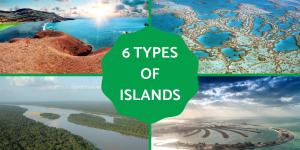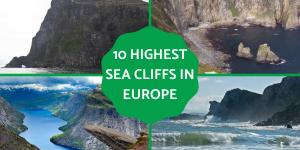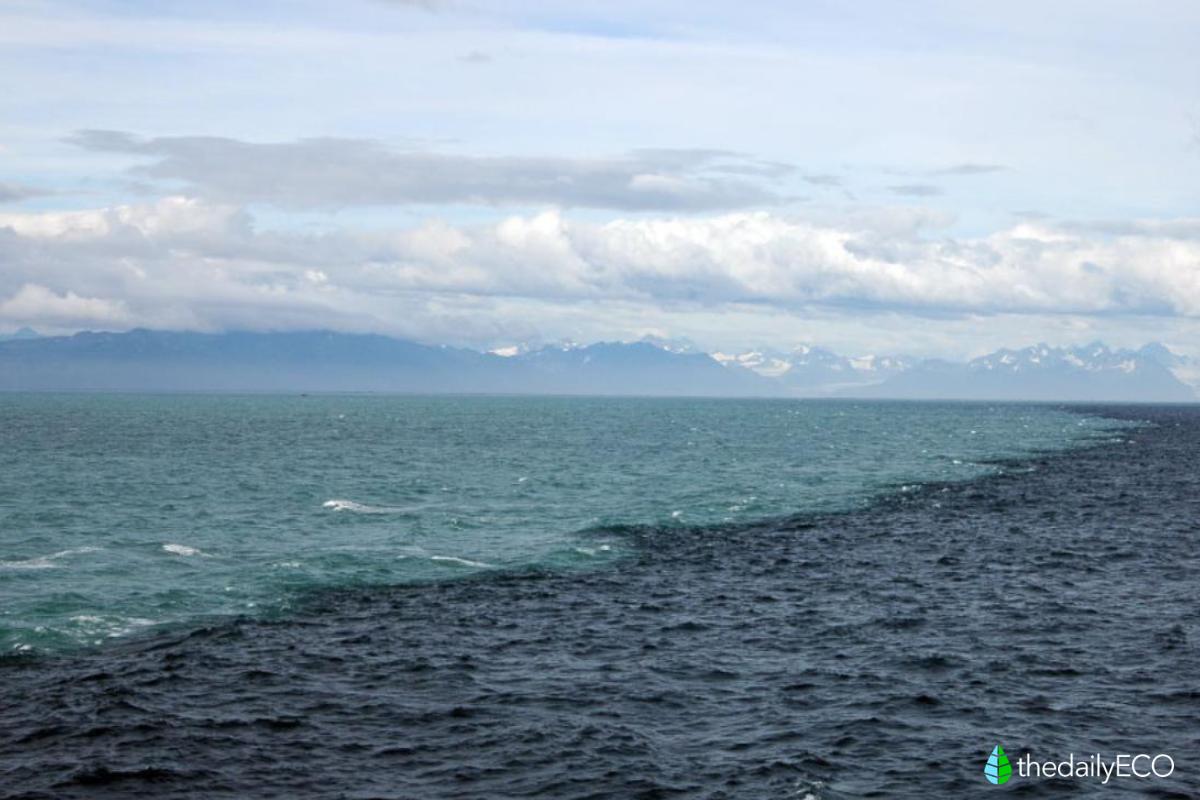Do the Atlantic and Pacific Oceans Mix with Each Other?


There are three great oceans on planet Earth: the Atlantic Ocean, the Indian Ocean, and the Pacific Ocean. These three oceans, together with the seas, occupy approximately 71% of the terrestrial territory. In this article we will focus on the Atlantic and Pacific oceans; both connected by the Strait of Magellan, the Drake Passage and another artificial passage with the Panama Canal. As we have mentioned, the two oceans are connected, but, as a photo was circulating on the Internet for years where it seemed that their waters did not mix, the myth was created that the waters of both oceans did not mix.
Be sure to read this EcologíaVerde article if you want to know why the waters of the Atlantic and Pacific oceans do not mix . Continue reading and we will explain it to you in detail.
Where do the Atlantic and Pacific oceans meet?
The Atlantic and Pacific Oceans meet at several locations depending on the specific definition and context.
One prominent meeting point is Cape Horn, situated at the southernmost tip of South America. Here, the South Atlantic Ocean and the South Pacific Ocean come together, forming a junction that holds both geographical and navigational importance. Cape Horn has long been renowned as a treacherous passage due to strong winds, powerful currents, and rough seas, making it a challenging point of transition between the two vast bodies of water.
Another significant location where the Atlantic and Pacific Oceans meet is the Drake Passage. This narrow body of water stretches between Cape Horn and Antarctica, acting as a crucial gateway connecting the two major oceans. The Drake Passage serves as a vital conduit for the exchange of oceanic currents, nutrients, and marine life between the Atlantic and Pacific. It is known for its turbulent seas and unpredictable weather conditions, creating a dynamic environment where the waters from both oceans interact and mix.
Do the Atlantic and Pacific Oceans mix with each other?
The belief that the Atlantic and Pacific oceans do not mix is a common misconception associated with the "Meeting of the Waters" myth. According to this myth, there is a specific location in the Gulf of Alaska where the two oceans meet but remain separate. However, this notion is not entirely accurate.
In reality, the Atlantic and Pacific oceans experience extensive mixing throughout their vast expanses. The movement of water in these oceans is influenced by various factors, including oceanic currents and wind patterns. While there may be variations in temperature, salinity, and density between different regions, there is no fixed point where the two oceans meet and remain separate.
Nevertheless, the mixing of these oceans can result in visually striking displays of color variations. This phenomenon can be attributed to the presence of eddies, which are large whirlwinds of water measuring approximately 100 kilometers in diameter.
These eddies play a crucial role in the movement of water and sediment. As they transport significant amounts of glacial sediments and clay, they converge in specific areas of the sea, giving rise to distinct colors and densities of water. Although it may appear as though the waters do not mix, it is important to note that at a microscopic level, some degree of mixing does occur.
The convergence of differently colored waters creates a unique spectacle that captures the imagination and showcases the dynamic nature of our oceans. In the subsequent sections, we will explore the scientific processes behind this mesmerizing phenomenon and delve into the intricacies of the mixing and non-mixing of the Atlantic and Pacific oceans in the Gulf of Alaska.
Make sure not to miss our other article that delves into the extent of Earth's water coverage.

Understanding the meeting of the Atlantic and Pacific Oceans
Contrary to the common belief, the waters of the Atlantic and Pacific oceans do mix where they converge between South America and Antarctica. Water does not behave like the positive ends of a magnet, where they repel each other and refuse to mix. Instead, the natural processes of oceanic currents and turbulence facilitate the blending of these two vast bodies of water.
In the region where the Atlantic and Pacific oceans meet, there is a dynamic interplay of currents and eddies that promote mixing. While there may be variations in temperature, salinity, and other properties between the two oceans, they do not remain distinct and separate. Instead, the movement of water masses and the action of wind and waves create opportunities for mixing and interaction.
It's important to understand that the world's oceans are interconnected and constantly in motion. The mixing of waters between the Atlantic and Pacific oceans is a fascinating natural phenomenon that contributes to the overall circulation and balance of our global marine systems.
The distinction between the waters to the east and west of an arbitrary longitudinal line drawn by mapmakers in Europe centuries ago does not imply any fundamental difference in the properties of these waters. However, it is important to note that there are significant features and boundaries in the ocean, although they may not align with the conventional maps used by cartographers.
In the vast expanse of the ocean, there are natural boundaries and regions characterized by distinct characteristics and processes. These boundaries are determined by factors such as ocean currents, temperature variations, salinity gradients, and ecological factors. While these boundaries may not align with the lines commonly depicted on maps, they play a crucial role in understanding the complexities of the marine environment.
Similar phenomena can be observed where rivers converge or where a river meets the ocean. As rivers flow towards the ocean, they often carry sediment, giving the water a murky appearance. This starkly contrasts with the darker, saltier ocean water it merges with. Due to differences in density between fresh river water and salty ocean water, it may initially appear as though they remain separate when crossing a bridge or being out on a boat. However, it's important to note that they will eventually mix, although it may take a day or two for complete blending to occur.
We invite you to explore our other article that provides a comprehensive explanation of the definition, distribution, and importance of sea waters.

Differences between the Atlantic and Pacific oceans
The Atlantic and Pacific oceans, despite being part of the same interconnected global system, exhibit distinct characteristics and differences due to various factors such as location, currents, climate patterns, and geography. Here are some notable differences between the Atlantic and Pacific oceans:
- Size and shape: the Atlantic Ocean is smaller compared to the Pacific Ocean. The Pacific is also broader and deeper than the Atlantic.
- Oceanic currents: the oceanic currents play a crucial role in shaping the characteristics of the Atlantic and Pacific oceans. The Atlantic Ocean experiences the Gulf Stream, which is a warm and swift current that originates in the Gulf of Mexico and influences the climate of the eastern United States and Western Europe. The Pacific Ocean, on the other hand, features the North Pacific Current, the California Current, and the powerful Kuroshio Current, among others, which influence weather patterns, oceanic ecosystems, and marine life in the region.
- Salinity: the salinity levels in the Atlantic and Pacific oceans vary. The Atlantic Ocean is generally saltier compared to the Pacific Ocean. This difference in salinity is influenced by factors such as evaporation, precipitation, and freshwater input from rivers. The Atlantic Ocean receives less freshwater input from rivers, resulting in higher salinity levels in many areas.
- Temperature: The Atlantic and Pacific oceans have varying temperature distributions. The Atlantic Ocean generally experiences a wider range of temperature variations compared to the Pacific Ocean. This is due to factors such as oceanic currents, proximity to landmasses, and climate patterns. The Pacific Ocean, being larger and deeper, tends to have more stable temperature conditions in its open waters.
- Marine life: The Atlantic and Pacific oceans harbor diverse marine ecosystems and species, but there are differences in the types of marine life found in each. Due to the influence of oceanic currents and geographical features, the Atlantic Ocean is known for its rich biodiversity, including iconic species like the Atlantic cod, humpback whales, and various types of sharks. The Pacific Ocean, particularly in the tropical regions, is home to vibrant coral reefs, diverse fish populations, and unique marine species such as the great white shark, Pacific salmon, and sea turtles.
These are just a few of the many differences between the Atlantic and Pacific oceans. It is important to note that the characteristics and distinctions can vary across different regions within each ocean, highlighting the complexity and dynamic nature of Earth's vast bodies of water.
If you are passionate about preserving the health of our oceans, read this other article as we explore the causes, consequences, and possible solutions to the urgent problem of plastic pollution in marine environments.
If you want to read similar articles to Do the Atlantic and Pacific Oceans Mix with Each Other?, we recommend you visit our Facts about nature category.
- Differences between the Pacific Ocean and the Atlantic Ocean . PacificOcean.org. Available at: https://oceanopacifico.org/diferencias-entre-el-oceano-pacifico-y-oceano-atlantico
- Endesa X. (2019). Gulf of Alaska: do two oceans collide? Endesa X. Available at: https://www.endesax.com/es/recursos/historias/golfo-alaska-choque-dos-oceanos







